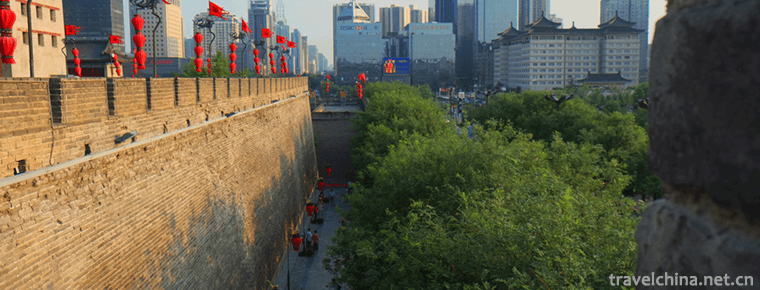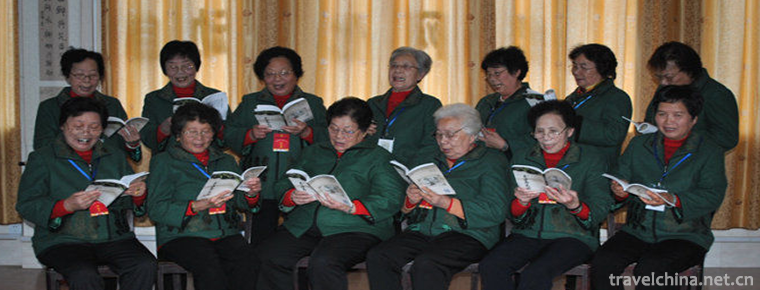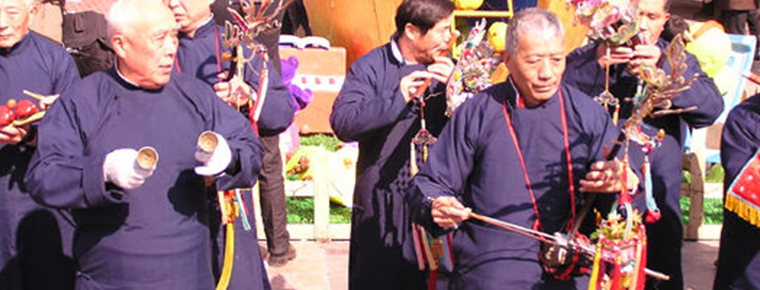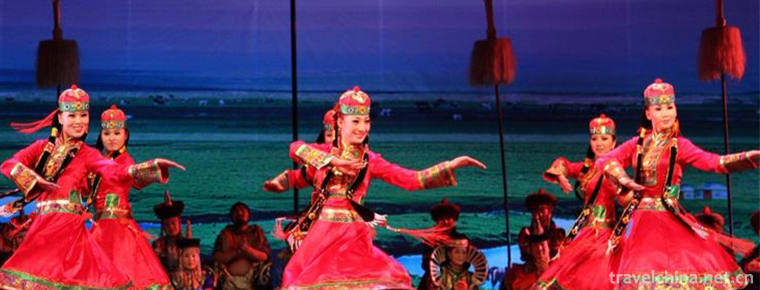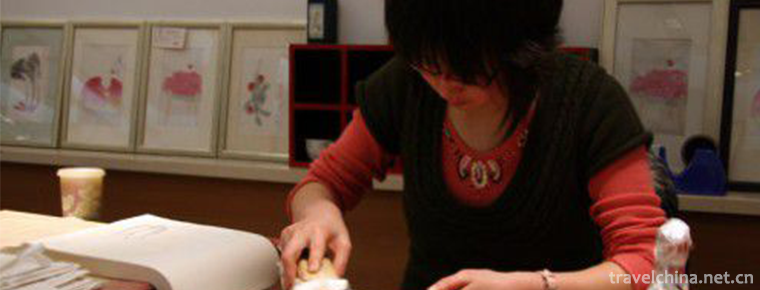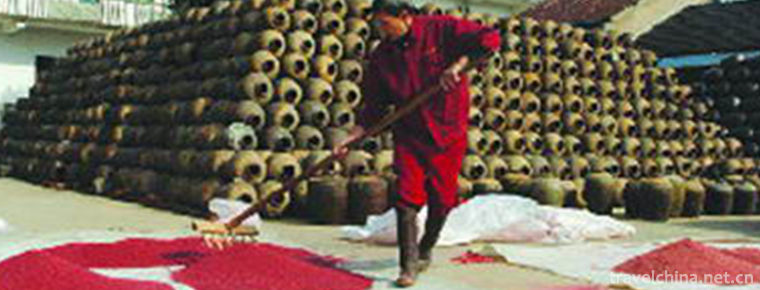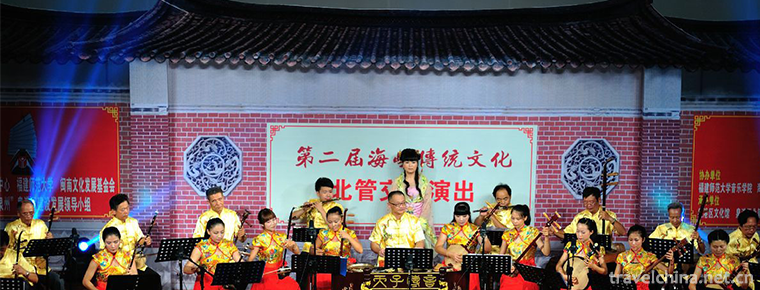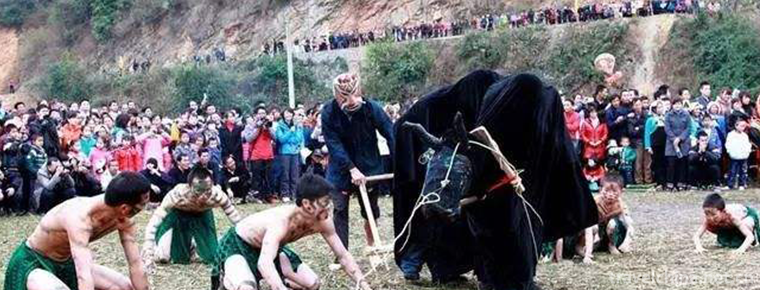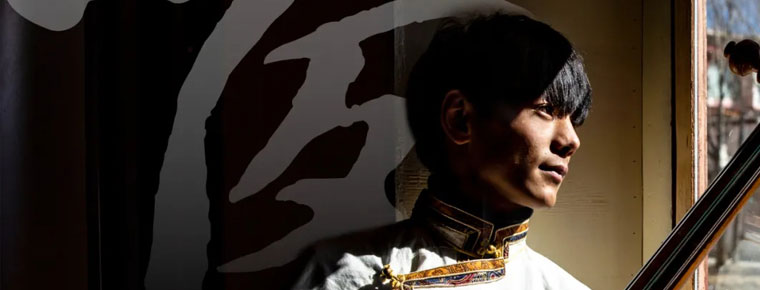Shaoshan
Shaoshan City, which belongs to Hunan Province, is located in the hilly area of central Hunan Province east of central Hunan Province. Shaoshan is situated in the west of Xiangtan City, adjacent to Ma Shan Township, Zhushiqiao Township and Sanxian'ao Township in Ningxiang County in the north and east, Lianghu Township and Nanzhushan Township in Xiangtan County in the southeast, Longdong Township, Baitian Town and Jinshi Town in Xiangxiang City in the south, Baitian Town and Jinshi Town in Xiangxiang City in the west. It has jurisdiction over Qingxi Town and Yintian Town, Shaoshan Town and Yanglin Township, and the municipal government is stationed in Qingxi Town.
Shaoshan is the hometown of Mao Zedong, the great leader of all ethnic groups in China. It is also the place where he lived, studied, worked and engaged in revolutionary activities in his youth. It is a famous revolutionary memorial, a national patriotic education base, a national key scenic spot and an excellent tourist city in China.
In 2016, the city's GDP reached 77.78.64 million yuan, an increase of 9.7% over the previous year.
In 2017, Shaoshan was selected as the fifth national civilized city.
Origin of place names
Shao is Yushun's musical name. "Book Yiji" said, "Ninety percent of Shaoshao, bring the Phoenix to the instrument." Historical Records: Shaoshan, according to legend, Shun Nanxun, played Shaoshao music here, because of its name. (Hunan Chronicle and Geographic Chronicle cited volume 354 of Jiaqing Unified Chronicle), "Cihai" interprets Shaoshan accordingly: "It is said that when ancient Yu Shun and Southern Tour, Shaoshan played here, hence its name"... uuuuuuuuuu There are eight sceneries in the mountains, and the scenery is beautiful. Yu Shun was the leader of the tribal alliance in the later period of the patriarchal clan society in ancient times. His surname is Yao, his surname is Yu Shun, and his name is reborn. He is another Ming emperor and sage who has been respected by the Chinese nation for generations after Yao. He was respected by Yao. Yao not only surrendered the dignity of the Allied Master to him, but also matched two female emperors and heroines who loved him. After Shun succeeded, in order to benefit mankind, open up territory, bid farewell to his loved ones, brave hardships, cross the Yellow River, cross the Yangtze River, go deep into the barren land of Jingchu, explore the pros and cons of mountains and rivers, and plan a grand plan for reclamation. On the way down south, Shun and his attendants camped in Shaoshan. The attendants sang and danced for Emperor Shun. With the beautiful music and dance, the cliffs were clear, the hills and valleys were singing, the trees shocked, the Phoenix heard the music and spread its wings, whispering and singing. Mountain resort, human Grand gathering, ancient recitation. Over time, people called the music that Emperor Shun had enjoyed Shao Music and the mountains that he had enjoyed Shao Music Shao Shan.
Division evolution
Qin to Jin are not counties in southern Hunan. Nanqi belongs to Xiangxi County.
Sui Kaihuang merged into Hengshan County in nine years. Tang Tianbao changed Hengshan County to Xiangtan County in eight years, from then on to Song Dynasty. Yuanxiangtan County rises to Xiangtan Prefecture, Shaoshan returns to Xiangtan Prefecture.
Ming Dynasty belonged to Juyili, Mianfeng Township, Xiangtan County; Qing Dynasty was the seventh capital of Xiangtan County; Guangxu 19 years (December 26, 1893), Mao Zedong was born in Shaoshan, the seventh capital of Xiangtan County. During the period of the Republic of China, it belonged to the west two districts of Xiangtan County, the ninth districts, Qingxi Township, Yintian Township and Qingtian Township.
In February 1925, Mao Zedong's wife, Yang Kaihui, organized and led the peasant movement in Huishaoshan. More than 20 night schools for peasants were established in Mao's ancestral hall, Li's ancestral hall and Pong's ancestral hall, and one of the earliest Party branches in rural China, Shaoshan Branch, was established in Shaoshanchong.
By the end of the 1930s, in order to meet the needs of the struggle against the enemy, the CPC Xiangtan District Committee (Xiangtan and Xiangxiang under its jurisdiction) decided to divide it into two sub-committees, namely, Shaoshan District Committee and Baitian District Committee. Shaoshan Municipal Committee has jurisdiction over Qingxi Township of Xiangtan County (now Shaoshan) and Xiangxiang County, Xiangxi Township.
In September 1945, the victory of the War of Resistance Against Japan ended, and the County Working Committee of Xiangning Border Region of the Communist Party of China was established in Shaoshan. In May 1949, it was renamed the Ningxiang County Working Committee of the Communist Party of China. The subordinate relationship of Shaoshan Party organization changed accordingly.
On August 15, 1949, Shaoshan was liberated. Since the founding of New China, there have been many changes in Shaoshan's system.
In 1961, Xiangtan County restored the district-level system and established Shaoshan District. In August 1963, Shaoshan Administration Bureau was established under the leadership of the Shaoshan District Committee of Xiangtan County. In December 1968, Shaoshan Administration Bureau and Shaoshan District of Xiangtan County were abolished and promoted to prefecture-level district, under the direct jurisdiction of Hunan Province, and the Zhuzan Team of Daping Commune and Baitian Commune of Xiangxiang County was delimited.
On January 12, 1981, the provincial Party Committee and the provincial government decided to revoke Shaoshan District of Hunan Province and re-establish Shaoshan Administration Bureau of Hunan Province and Shaoshan District of Xiangtan County under the leadership of Hunan Provincial Party Committee and Xiangtan County Committee respectively.
In 1984, Shaoshan District of Xiangtan County was upgraded to a county-level district and changed to the jurisdiction of Xiangtan City.
In August 1986, the Hunan Provincial Party Committee and the provincial government held an on-site office meeting in Shaoshan, which decided to further open Shaoshan, and clearly defined the nature of Shaoshan: it is not only a revolutionary memorial, but also a scenic resort. At the same time, it also decided to open the drip hole to Chinese and foreign tourists.
On December 26, 1990, with the approval of the State Council, Shaoshan District of Xiangtan City was abolished and Shaoshan City at the county level was established, which is under the jurisdiction of Hunan Province and is under the supervision of Xiangtan City. Time jurisdiction of 6 townships and 2 townships: Qingxi, Yintian, Daping, Yongyi, Ruyi, Yanglin, Yintian, Shaoshan.
In October 1997, with the approval of the provincial people's government, Ruyi Township was upgraded to a system town with 5 townships and 3 townships under the municipal jurisdiction.
At the end of 2001, Yintian Township was merged with Yintian Town, and Yintian Town was established with 4 townships and 3 townships under the jurisdiction of the whole city.
On May 10, 2012, seven villages in Longdong Town of Xiangxiang City, including Shitang, Huaqiao, Guyang, Shaodong, Shaoxi, Xinhu and Qiancheng, were assigned to Shaoshan Township of Shaoshan City, while Tuantan and Shutang of Jinshi Town of Xiangxiang City were assigned to Yanglin Township of Shaoshan City.
In 2015, according to the adjustment plan of Shaoshan Township Zoning, Qingxi Town, Ruyi Town and Yongyi Township were merged to set up Qingxi Town; Shaoshan Township and Daping Township were merged to set up Shaoshan Township. In this round, Shaoshan has withdrawn and merged three township-level administrative divisions. It has jurisdiction over Qingxi Town, Yintian Town, Shaoshan Township and Yanglin Township.
Shaoshan City is located in the hilly area of central Hunan Province, east of central Hunan Province. Its geographical coordinates are 112 23 52 - 112 38 13, 27 51 40 - Located at the junction of Xiangxiang, Ningxiang and Xiangtan, 40 kilometers away from Xiangtan and 120 kilometers away from Changsha. It is located to the west of Xiangtan city. North and East are adjacent to Ma Shan Township, Zhu Shiqiao Township and Sanxian'ao Township in Ningxiang County. The southeast is bounded by Lianghu Township and Nanzhushan Township in Xiangtan County, the south by Longdong Township, Baitian Town and Jinshi Town in Xiangxiang City, and the west by Baitian Town and Jinshi Town in Xiangxiang City.
topographic features
Shaoshan belongs to the hilly area of middle Hunan. The basic geomorphological pattern was established in the late Zhuluo Yanshanian movement. Later, with the intermittent and slow rise of crustal movement and underwater cutting, the Shaohe Valley and terrace, as well as the upright Shaofeng mountains and hills denudation surface were formed. The general geomorphological outline is based on the Shaofeng Mountains, Shaohe River and Shishi River, which constitute the Western uplift and incline to the East and southeast. The mountains, hills, hills and plains are complete. Shaofeng, the highest point in the city, is 518.5 meters above sea level and the lowest point is 48 meters above sea level at six muzhou, with an elevation difference of 470.5 meters. The classification proportion of its types: valley plain accounted for 31.77%, hilly land accounted for 31.88%, hilly land accounted for 22.35%, mountain area accounted for 14%. The Shaoshan Mountains stretch from south to north, zigzag and stretching. In Shaoshan Chongneihu Longpan, numerous Chong, Cave, Valley, Gully and so on are formed and become scenic spots of tourist value. Shaofeng, as its name implies, is the highest peak in Shaoshan, 518.9 meters above sea level. Shaofeng is located in the southern corner of Shaoshan, about 5 kilometers away from Mao Zedong's former residence. Shaofeng is the seventy-first peak of Hengshan Mountain in Nanyue, more than two hundred meters higher than Changsha Yuelu Mountain in the seventy-second peak. Lion Mountain lies in the middle of Shaoshan City, 10 miles away from Shaoshan Chong.
geology
The strata are well developed and the geological structure is complex. Mountains rise and fall, streams ripple, and scouring sections connect. The strata in the territory are Banxi Group, Sinian, Cambrian, Lower Ordovician, Nihezi, Carboniferous, Permian, Lower Triassic, Lower Jurassic and Lower Tertiary. In the west, there are Indosinian granite intrusions, whose geological structure is spiral and twisted structure is Yintiansi spiral structure in Shaoshan.
hydrology
Shaoshan River belongs to the Xiangjiang River system and enters the Xiangjiang River through the Lianshui River. There are 9 rivers over 5 kilometers in the city, 103 kilometers in length. Among them, the Shaohe River originating from the Shaoshan Mountains is the largest. Shaohe River, formerly known as Yunhu River, used to be ninety-eight curves.
climate
Shaoshan is located in the subtropical humid climate area, with distinct seasons, cold winter and hot summer, long hot summer and short cold period. The annual average temperature is 16.7 C, slightly lower than the surrounding counties and cities, and the annual extreme maximum temperature is 39.5 C. The average temperature in January is 4.4 C. July is the hottest month with an average monthly temperature of 28.9 degrees Celsius. The annual average precipitation in Shaoshan is 1358 mm, reaching 1719.9 mm in most years. The rainy season begins around April 15 and ends around July 10. It is rainy in spring and summer and dry in autumn and winter. Shaoshan has more sunshine, the annual sunshine reaches 1717 hours, the annual average sunshine percentage is 39%, the distribution trend is basically consistent with the temperature change.
Famous scenery
Mao Zedong's former Residence
Mao Zedong's former residence is located in Shaoshan Village, Shaoshan Township, Shaoshan City, Shaoshan Township, Shaoshan City, Shaoshan Township, Shaoshan Township, Shaoshan Township, Shaoshan City. Sitting in the South and north, it is a "concave" type building with civil structure, with Mao Zedong's family in the east, neighbors in the West and two halls in the middle The total building area is 472.92 square meters. The main attractions are Mao Zedong's former residence, Bronze Statue Square and drip hole.
Stele Forest of Mao Zedong's Poems and Ci
Mao Zedong's Poetry Stele Forest is located on the hillside of Shaofeng, about 3 kilometers away from Mao Zedong's former residence. Construction started in 1991 and was officially opened to the outside world in 1993. It covers an area of about 20,000 square meters.
Maoist ancestral hall
Mao ancestral temple is the general ancestral temple of the Mao family in Shaoshan. It was built in 1758 and completed in 1763. The building is of brick and wood structure, with green bricks and tiles. The building area is about 700 square meters.
Mao Zedong Memorial Garden
Mao Zedong Memorial Park is located on the hills and mountains about 500 meters west of Mao Zedong's former residence. It was initially named "Mao Zedong Road Scenic Garden". The conception of the scenic garden is obviously inspired by the miniature landscape of "Window of the World" in many big cities throughout the country. It took only one year to build the whole scenic area, covering an area of about 200,000 square meters, with nearly 100 large and small buildings, integrating many functions such as commemoration, education and sightseeing.
Bronze statue of Mao Zedong
Mao Zedong's bronze statue weighs 3.7 tons, is 6 meters high, its base is 4.1 meters high and its height is 10.1 meters high. It symbolizes the National Day of "10.1" and the founder of New China.
Drop hole Scenic Area
Drip hole, located in the west corner of Shaoshan Chong, is 3 kilometers away from the former residence of the Chairman. Dishui Tung Tian is a famous scenic spot group in Shaoshan scenic spot. It consists of natural scenery such as Dishui Yougu, Huxiping, Longtou Mountain and buildings such as Dishui Tung No. 1.
Shao Feng Scenic Area
Shaofeng has eight sceneries, namely, Shaofeng Emerald, Fairy Mao'an, Carmine Ancient Well, Taling Qingxia, Shiwu Qingfeng, Dunshi Chengmen, Fengyi Pavilion Site and Shibi Liuquan.
Pavilion of Fengyi Pavilion
Legend has it that when Emperor Shun visited the South, he was destined to play Shao music here. The beautiful music sounded, and birds and song instantly, and the Phoenix danced lightly. Emperor Shun flew back to Shaoshan after the rise of Jiuyi Mountain. The people of Shaoshan built a "Fengyi Pavilion" by the plane tree where Phoenix lived. Today, Fengyi Pavilion is situated behind the fairy nunnery.
Fairy Mao An
In Mao's genealogy, there are two legends about Mao's fairy nunnery, which are recorded in The Story of fairy nunnery. The fairy nunnery was built on the hillside of Shaofeng. Today, the grass-and-lu cottage is still there, and the name of the nunnery is still vaguely visible on the lintel of the gate.
Rouge ancient well
Legend has it that Emperor E and Nvying, the second concubine of Emperor Shun, passed by and saw a spring well with a level like a mirror. They dressed the water carelessly. Carmine fell into the well and the water was pink immediately. This is the origin of the ancient well of carmine.
Stone house breeze
Stone House, also known as "Jade Palace", is located on the mandarin fish peak on the north side of Shaofeng.
Stone door
This gate is traditionally established by Dream Gong. Menggong was born after an aunt's dream. Mengshengzi never saw or knew who his biological parents were when he was young. He was brought up by an old man who was collecting medicine and provided for his practice of writing and martial arts. Meng Shengzi grew up and joined the army. He was demobilized and returned to the fields after his military achievements, filial piety to his adoptive father. One day, Dream-born Son missed his biological parents, knelt down to worship the world and heard a thunderbolt. The two brown stones he stood on rose sharply by several feet, standing up like the gates of heaven. The birth mother appeared to recognize her adoptive father, and the dream son also visited his mother under the stone gate. From this comes the view of a stone gate.
TA Ling Ching Xia
Legend has it that Shaofeng used to have a centipede which only eats the blood of the living creatures. It erupted poisonous fog all day long, which made the area cloudy, dark and hazy. So Taiyi Zhenren used the pagoda to dress it down, and then beautiful clouds appeared in the sky . This pagoda is located on the southern hillside of Shaofeng, hence the name Qingxia of the Taling Mountains.
Shek Pik spring
There is a waterfall on the east of Shaofeng, known as Stone Wall Spring. Legend has it that the fish dragon girl got her name by chiseling stones and drawing springs.
Blackstone village Scenic Area
Heishizhai Scenic Area is located in the north of Shaoshan Scenic Spot, where mountains fluctuate, green water and abundant vegetation. There are Qinggouli Reservoir, Hongqi Reservoir, Shaoshan Deer Farm, Yanglin Deer Farm, Heishizhai and other scenic spots. The highest and lowest elevations of the scenic spots are 500.9m and 118.8m, with a total area of 30 square kilometers.
Shishan Mountain Scenic Area
Lion Mountain Scenic Area is located in the east of Shaoshan Scenic Area. There are Ruyi Pavilion, Datangwan, Benben Ridge, Pingdingling Ridge, Swallow Cave, Four Immortals Lifting Treasure, Lion Swallowing Day, Rutong Temple and other scenic spots.
Famous figure
Mao Zedong (1893.12.26-1976.9), a great poet, Marxist, proletarian revolutionist, strategist and theorist, is the main founder and leader of the Communist Party of China, the People's Liberation Army and the People's Republic of China.
Mao Zemin (1896.4.3-1943.9.27), Mao Zedong's eldest brother. He has served as President of the National Bank of the Soviet Republic of China and Acting Director of the Finance Department of Xinjiang.
Mao Zetang (1905.9.25-1935.4.25) was a member of the Central Soviet Regional Bureau and head of the Independent Division of the Red Army.
Mao Anying (1922.10.24-1950.11.25), the eldest son of Mao Zedong and his wife Yang Kaihui, died in the War of Resistance Against the United States and Aid Korea and was buried in the cemetery of martyrs of the Chinese People's Volunteer Army in Huacang County, Ping'an Nan Road, Korea.
Mao Anqing (1923.11.2-2007.3.3), the second son of Mao Zedong and Yang Kaihui, was a builder of Marxist theory.
Mao Zejian (1905-1929), revolutionary martyr and cousin of Mao Zedong. He was a member of the women's movement and a guerrilla leader.
Mao Chuxiong (1927.9.8-1946.8.10), a revolutionary martyr, is a nephew of Mao Zedong, son of Zhou Wennan and Mao Zedong.
Peng Shaohui (1906.9.6-1978.4.25) was an army general, proletarian revolutionist and militarist of the Chinese People's Liberation Army. The first commander of the Seventh Army of the Chinese People's Liberation Army.
City honor
On December 24, 2017, Shaoshan was selected as the top 200 charming cities with Chinese characteristics in 2017.

















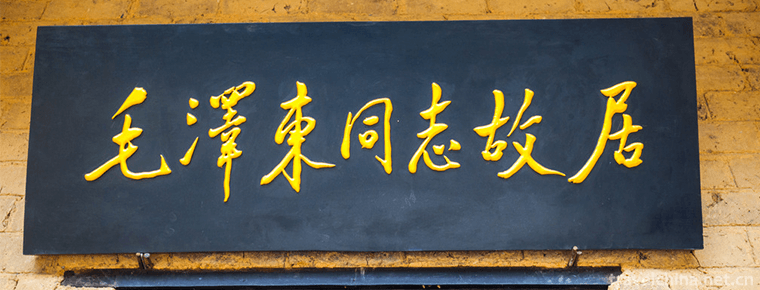
-
Xian City Wall Scenic Area
Xi'an City Wall Scenic Area and National AAAAA Tourist Scenic Area are the four-in-one Scenic Area around the city with the theme of the ancient city wall of Xi'an, including the moat.
Views: 136 Time 2018-12-12 -
Song Album
"Dongshan Song Book" was introduced from Chaozhou, Guangdong Province, in the Ming Dynasty. Its tunes were constantly changing in the singing of folk singers and gradually assimilated.
Views: 164 Time 2019-04-30 -
Jiangnan bamboo
Chinese traditional instrumental music, silk and bamboo, is popular in southern Jiangsu and Zhejiang. After the Revolution of 1911, great progress was made in Shanghai.
Views: 113 Time 2019-05-05 -
Five major tunes in southern Shandong
The five major tunes in southern Shandong, also known as Tan Ma Diao and Tan Ma Diao, are traditional folk song suites that are active in Tancheng County, Linyi City, Shandong Province, with Tan Town .
Views: 411 Time 2019-05-15 -
Mongolian Sawurden
Mongolian Sawurden, Xinjiang Uygur Autonomous Region and Jingxian traditional dance, one of the national intangible cultural heritage..
Views: 200 Time 2019-06-04 -
Wood Watermarking Techniques
Wooden watermarking is mainly made by such basic technological procedures as hook (sub-plate), engraving (plate-making), printing (printing) and special techniques as engraving, picking and dusting..
Views: 155 Time 2019-06-06 -
Traditional Brewing Techniques of Brewing Wine
The traditional brewing technology of Jinhua liquor is the traditional handicraft technology of Jinhua City, Zhejiang Province. The typical representative and complete remains.
Views: 140 Time 2019-06-07 -
Quanzhou North Pipe
Beiguan, also known as Beiqu, Xiaoqu, Quzi, is a kind of traditional folk silk and bamboo music widely spread in Quangang District, Quanzhou City, Fujian Province. China's Beiguan is now only distribu.
Views: 205 Time 2019-06-11 -
She Nationality Medicine
She medicine is mainly distributed in Jingning She Autonomous County of Zhejiang Province and in some mountainous areas of Fujian and Jiangxi provinces. She nationality has no written language and is .
Views: 128 Time 2019-06-14 -
Add another festival beside the word ants of the Zhuang nationality
The Zhuangs Ant Festival (insect word plus another) is mainly prevalent in the Hongshui River Basin in the northwest of Guangxi Zhuang Autonomous Region. It is named "Ant (insect word plus anothe.
Views: 178 Time 2019-08-16 -
About Ding Zhen picture
Zhaxi Dingzhen (Chinese Name: Ding Zhen), born in 2000, lives in Litang County, Ganzi Prefecture, Sichuan Province..
Views: 156 Time 2020-12-06 -
Historical evolution of Yibin
In the sixth year of Jianyuan (135 B.C.), Emperor Wu of Han Dynasty established Qianwei County, and at the beginning of the county administration, he (the west of Zunyi City, Guizhou Province) was established. In the first year of the first Yuan Dynasty of emperor Z.
Views: 375 Time 2020-12-18
